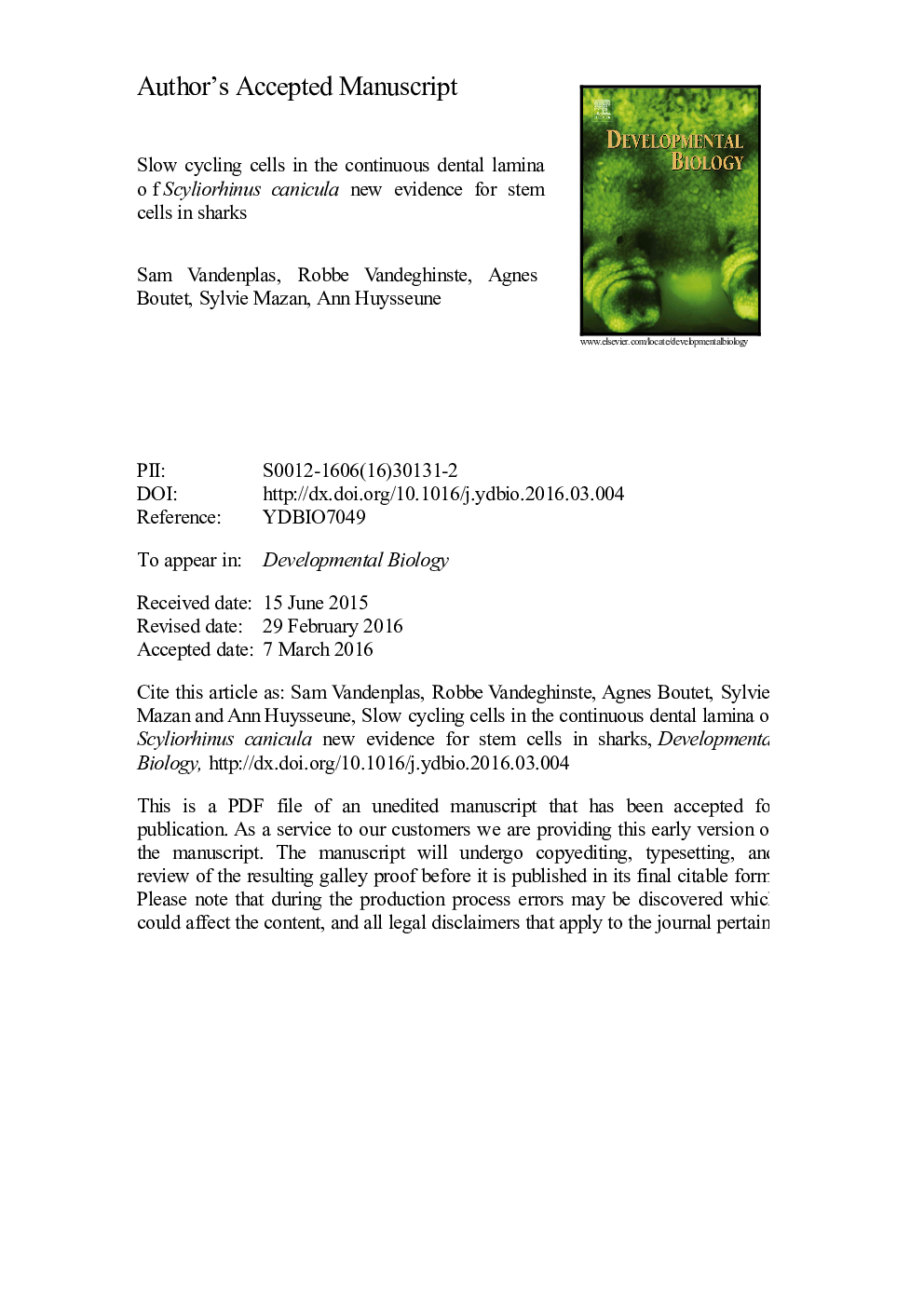| کد مقاله | کد نشریه | سال انتشار | مقاله انگلیسی | نسخه تمام متن |
|---|---|---|---|---|
| 10931195 | 1093621 | 2016 | 40 صفحه PDF | دانلود رایگان |
عنوان انگلیسی مقاله ISI
Slow cycling cells in the continuous dental lamina of Scyliorhinus canicula: new evidence for stem cells in sharks
دانلود مقاله + سفارش ترجمه
دانلود مقاله ISI انگلیسی
رایگان برای ایرانیان
کلمات کلیدی
موضوعات مرتبط
علوم زیستی و بیوفناوری
بیوشیمی، ژنتیک و زیست شناسی مولکولی
بیولوژی سلول
پیش نمایش صفحه اول مقاله

چکیده انگلیسی
In the lesser spotted catshark (Scyliorhinus canicula), as in most non-mammalian vertebrates, the dentition renews throughout life. To contribute to our understanding of how continuous tooth replacement is achieved, we searched for evidence for the presence of stem cells in this species. Three-dimensional reconstructions of juvenile (2-3 weeks post-hatch) specimens showed that tooth families merge imperceptibly with so-called interdental zones within a continuous and permanent dental lamina. Interdental regions are composed of three layers, continuous with cervical loop, middle, and outer dental epithelium of the tooth families, respectively. A BrdU pulse-chase experiment revealed that cell proliferation is initiated in the lingual part of the dental lamina and the resulting population shifts one tooth position towards the oral epithelium in around four to five weeks. In the longest chase time (114 days) label-retaining and arguably non-differentiated cells were present at the lingual border of the dental lamina. These were found in the outer and middle dental epithelium, both within and between tooth families. This area of the dental lamina did not show expression or distribution of Sox2. Our data support the hypothesis that stem cells reside at the lingual border of the continuous dental lamina, more specifically in the middle dental epithelium at the level of the tooth families, and in its extension between the tooth families. To demonstrate their true stemness and their role in continuous tooth replacement, it remains to be shown that these cells have the potential to give rise to a complete new successor.
ناشر
Database: Elsevier - ScienceDirect (ساینس دایرکت)
Journal: Developmental Biology - Volume 413, Issue 1, 1 May 2016, Pages 39-49
Journal: Developmental Biology - Volume 413, Issue 1, 1 May 2016, Pages 39-49
نویسندگان
Sam Vandenplas, Robbe Vandeghinste, Agnes Boutet, Sylvie Mazan, Ann Huysseune,